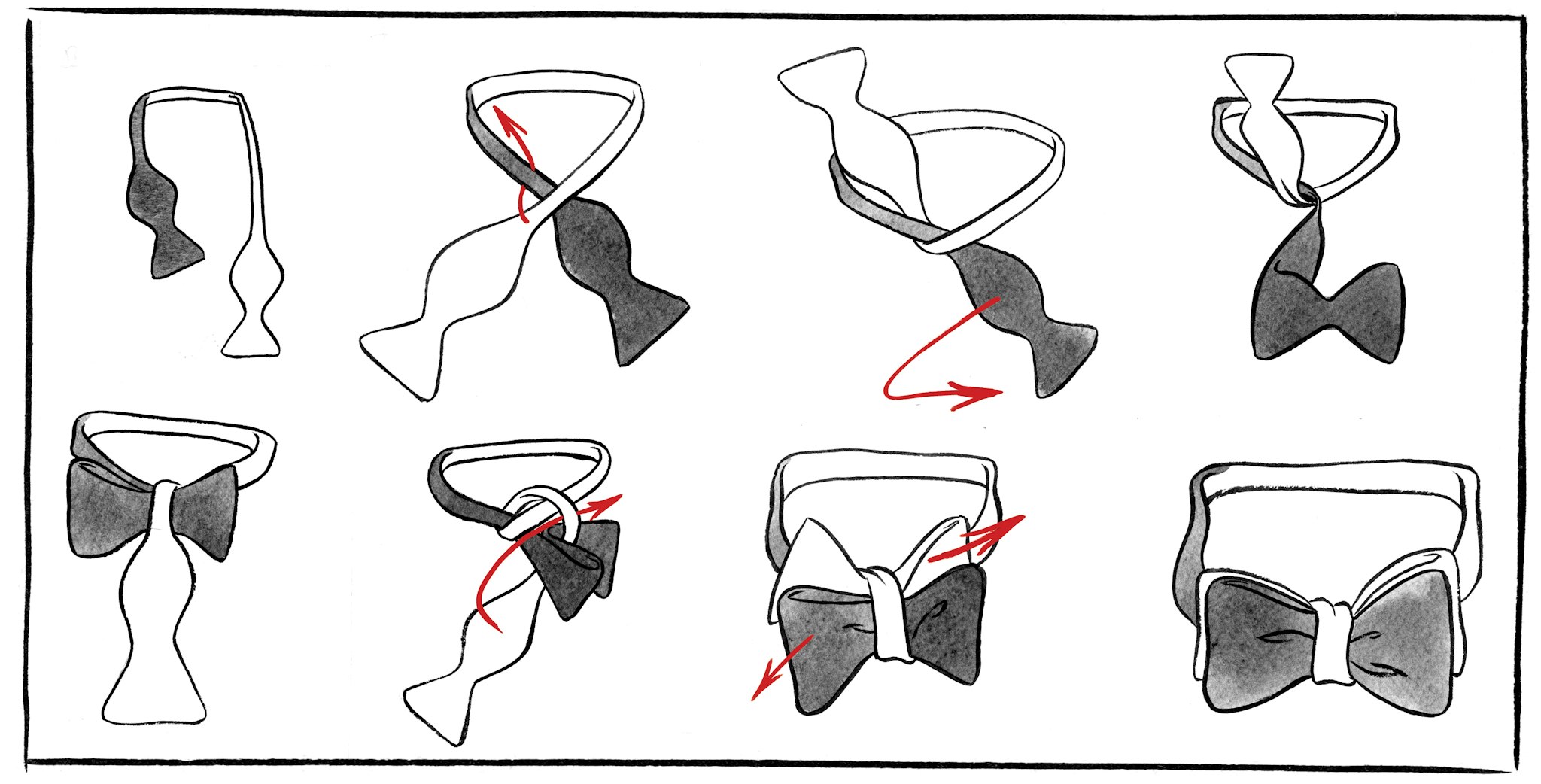
Richard ‘Dick’ Carroll, our resident illustrator, explains how to keep on the right side of formal. There’s plenty of options as long as they're black and white!

Peak, Shawl or Notch lapel?
We are partial to the classic peak lapel, as we have on our ready-to-wear Tuxedo Model 4, although the shawl-collared variety is another classic option that we recommend often. Iconic black tie wearers such as Cary Grant, Frank Sinatra and Fred Astaire wore both to great effect. We generally recommend avoiding the notch lapel, however, as it can look too much like a black suit.

Find the Right Shirt
A covered placket is easy and elegant, especially if you don't like the look of studs, however a pleated front with exposed studs is a classic look as long as there are no ruffles. The important thing to remember is that regular shirt buttons shouldn't be visable--either leave them covered or replace them with studs.

Keep your waist covered
One of the main focuses of black tie is the covering of any seams. This is why a different fabric is used for the lapels, and then again on the outer seam of the trousers. As for your waist, the break between shirt and trouser should not be visible. Cummerbund or waistcoat will do the trick, and give the added benefit of extending the leg line. We suggest avoiding a belt at all costs.

Cuff or No Cuff?
Black tie is one of the rare occasions where we forgo adding a cuff, in line with the idea of avoiding visible seams. Your footwear should be simple as possible. We suggest a black cap-toe with no broguing, or our Baudoin and Lange slippers in black suede. The inner seam of the trouser however, should not be covered with satin. Pleats are also acceptable if needed while flat front is another option to provide a cleaner look. We suggest avoiding any belt loops if possible.

How to tie your bow-tie
A last bit of help for tying your bow-tie. We suggest never using a pre-tied bow-tie—it doesn't have to be perfect but it does have to be tied.



